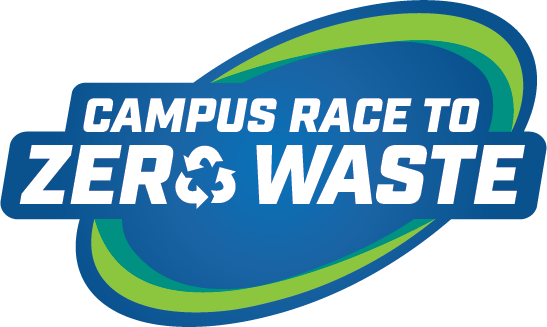Electronics Recycling is a special category that tracks the amount of computers, printers, consumer electronics and other scrap or refurishable eligible materials collected across campus. Instead of weekly updates, this category is based on a one time tally for all materials collected over a one month-long period during the February and March competition window. Results will be presented at the end of the overall competition in April.
Additional details:
- Recycling and Reuse – All e-waste can be counted whether it is sent for recycling or refurbishment and reuse.
- All sources welcome– Unlike other categories, we encourage schools to include electronics collected from the general public (i.e. non-institution community members bringing materials from home) at special drop off events. Schools are encouraged to work with their local communities to hold public drop off events and count these materials as long as the collection takes place on the campus itself.
- 3rd Party Certification – As explained further below, schools must use recycling service providers that are certified by R2 or e-Stewards for appropriate environmental practices.
Reporting Period
Schools select the start and stop date as long as the entire 30 day period falls within the extended 10 weeks of the competition and pre-season period. Schools should provide enough time at the end of their 30 day collection window to ensure they are able to gather and calculate weight data before the April reporting deadline. Results will be based on per capita numbers using the same full-campus FTE population as the traditional competition.
Recognition
- Per Capita – This category is ranked on a per capita basis.
- Total Amount Recycled – This category is ranked based on total amount of recyclables, and community engagement (beyond the campus borders) is also taken into consideration.
Tracking Quantities
Stockpiling or counting electronics material generated before the 30 day start period is not allowed. If schools have an ongoing collection process they can simply inventory electronic materials on site at the start of the 30 day period and then track material added to that inventory or shipped during the reporting period to determine how much was collected for recycling.
All reported materials are based on actual weights where available. Where this is not possible, schools may use volume-to-weight conversion multipliers to determine an approximate weight based on a visual survey of the quantity collected. Schools are encouraged to weigh sample loads of electronics to create their own campus-specific conversion multipliers. Where this is not possible, general volume-to-weight multipliers provided below may be used.
What Materials Can be Counted?
Participating schools can count whatever material is accepted as “electronics” by their e-waste recycling service provider. These may include:
- Computers, printers (including ink jet and toner cartridges) and other office electronics
- Cell phones & and other held devices
- Televisions, stereos
- Misc. consumer electronics
- Ancillary items (chargers, cords, head sets, old CD’s, etc)
- Consumer electronic batteries
Electronics that are sent for refurbishment are eligible along with items scrapped for recycling.
Schools will be asked what materials are included when submitting their data to Campus Race to Zero Waste, but will report a single combined weight number for all.
Unlike other competition categories, schools may include electronics collected from off-campus community members as long as the collection activity takes place on the campus itself.
3rd Party Certification
To avoid the negative health and environmental impacts of improper handling practices, reported electronics material must be handled by a recycling company meeting either of the two accredited certification standards in place, R2 or e-Stewards®. Participating campuses should contact the company (ies) handling their material to verify they are 3rd party certified to one of the standards. An exception is made for those materials not covered by the standards (such as ink jet cartridges, batteries, etc.). Exception is also made for electronics material collected for reuse or refurbishment programs.
